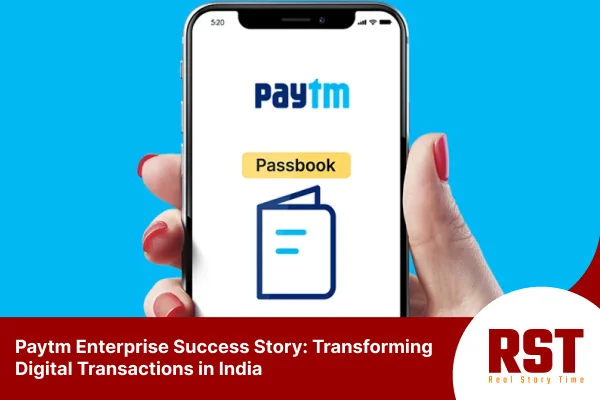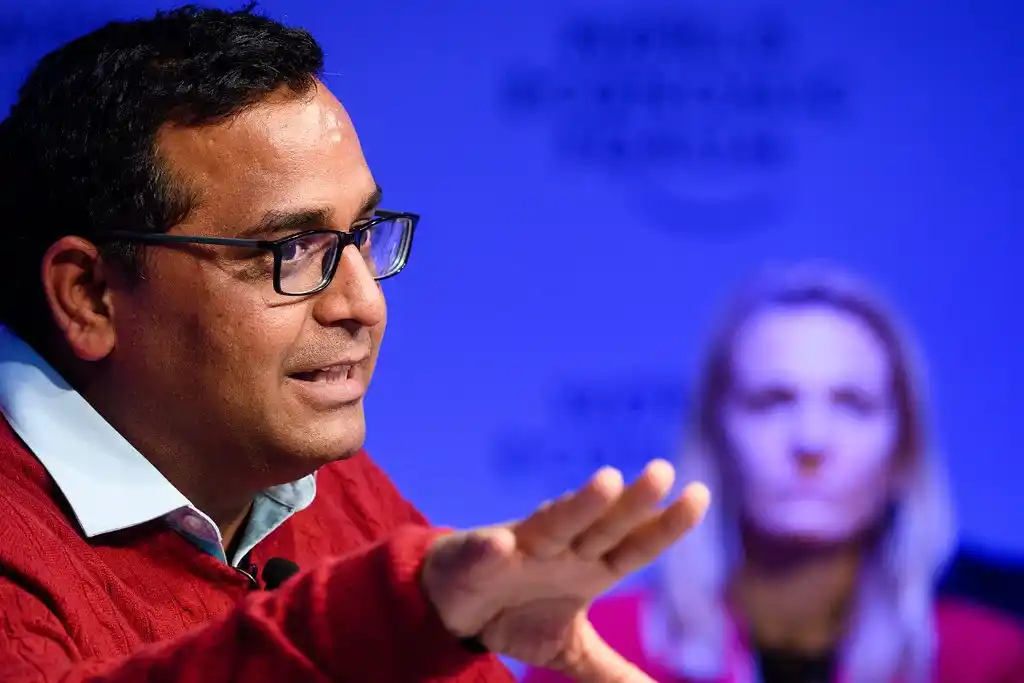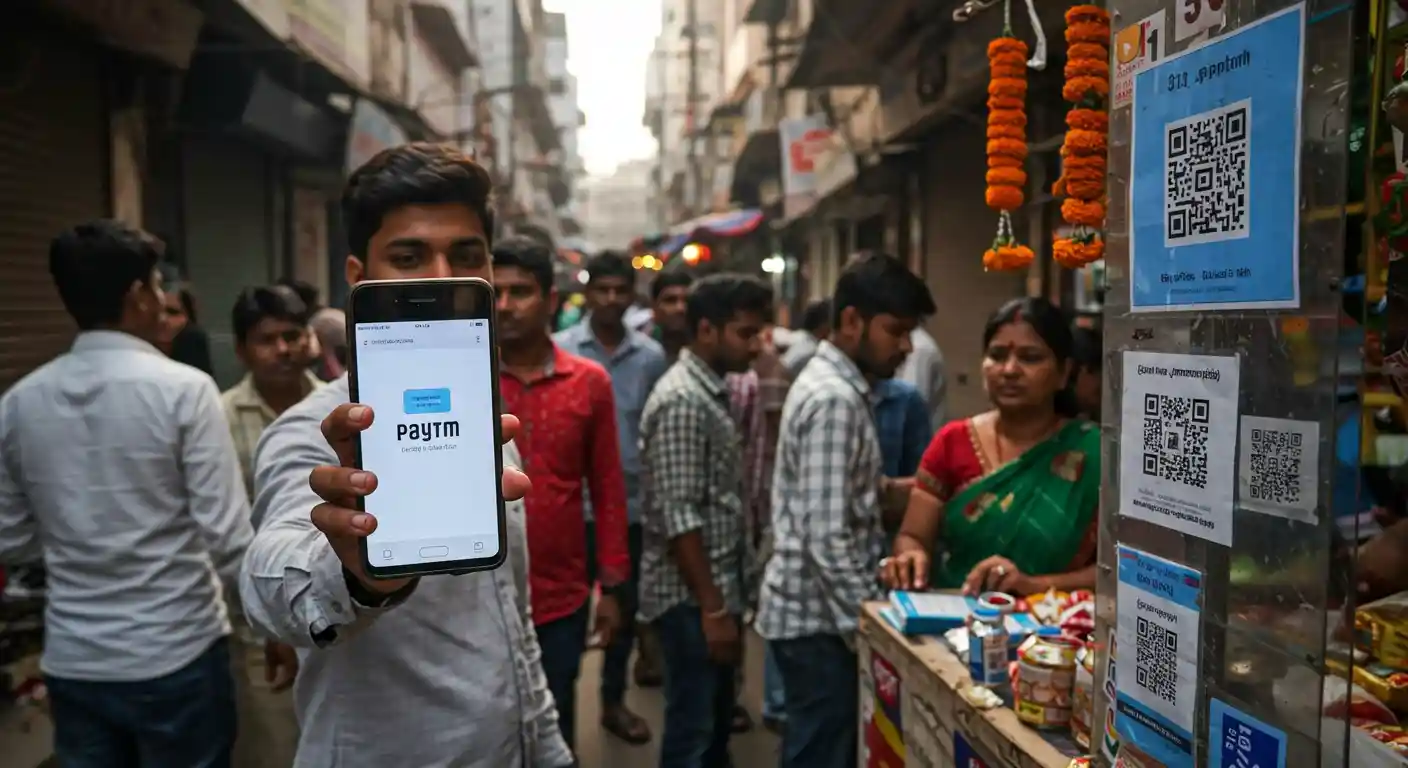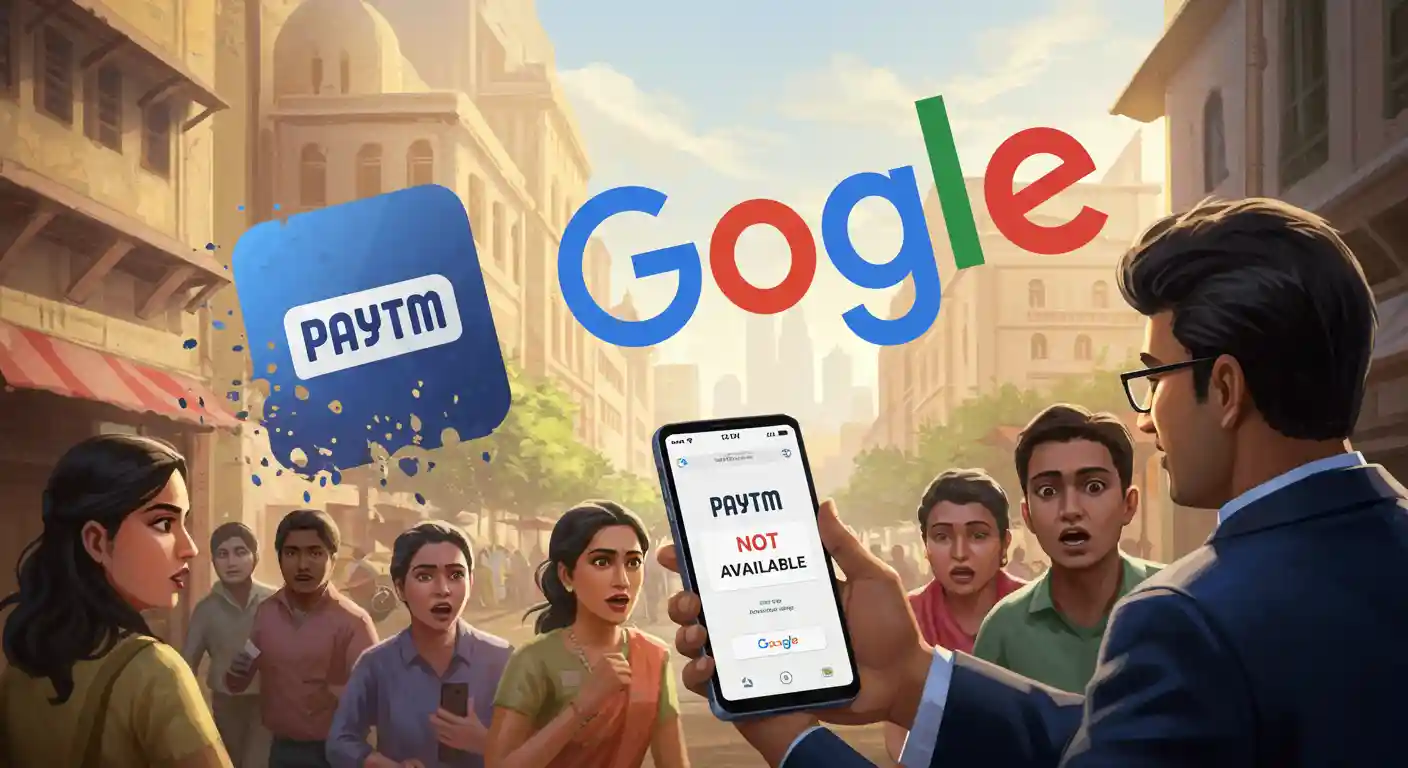Paytm Enterprise Success Story: Transforming Digital Transactions in India
By Kushal Shrestha - Apr 6, 2025 | Updated: April 6, 2025 | 13 min read

How could a small startup founded in 2010 yield one of India’s most popular digital payment platforms? We are talking about Paytm Enterprise’s Success Story: a story of innovation, resilience, and an unending thirst for transforming how people deal with money.
Back in the day, when India was still largely cash-dependent, Vijay Shekhar Sharma pursued a bold objective to spread financial services across all population sectors.
Paytm was founded as an easy platform for mobile recharges and bill payment mechanisms. It expanded when users responded favorably due to its easy-to-use interface and instant accessibility capabilities.
Paytm Enterprise’s success story received its most significant opportunity when the Indian government’s 2016 demonetization initiative caused Indians to adopt digital payment methods. Above all else, Paytm experienced significant expansion in user count and transaction activity during this time.
What began as a niche platform became a lifeline for millions as Paytm emerged as the go-to solution for cashless transactions.
Since its establishment, Paytm has demonstrated a learning capacity and the ability to present new ideas to the market. The company developed banking services and e-commerce operations and invested in operations to offer a complete financial system.
Due to its vision-oriented approach, endurance, and continuous innovation, Paytm Enterprise’s success story includes over 330 million users across 10 million merchants within 450 cities.
It has grown from tiny beginnings to become the most prominent digital payment platform in India and a source of inspiration for young entrepreneurs globally. It serves as an enterprise and a symbol of the newer leaps taking India to the future.
Vijay Shekhar Sharma: The Visionary Behind Paytm Enterprise’s Success Story

It began with the dream of an Aligarh-born visionary entrepreneur, Vijay Shekhar Sharma, the heart and soul behind the Paytm enterprise’s success story. Coming from a middle-class family and studying in Hindi, he faced language difficulties but never gave up on his ambitions. He earned his B.E. in Electronics and Communication Engineering from Delhi College of Engineering.
He started his entrepreneurial venture with the development of indiasite.net in 1997 while he was still a student with his friend Takhar. Two years later, he sold it to the US Lotus Interworks for $1 million and continuously dreamed big before launching One97 Communications in 2000, which offered mobile content services.
Vijay founded Paytm in 2010 while traveling. He found buying physical cards to charge his phone inconvenient, so he created an online platform for mobile recharges.
Over the years, Paytm has evolved from a recharge service to India, emerging as a leading fintech revolutionizing digital payments with millions of transactions as people transact differently.
The Early Stages of Life and Entrepreneurial Journey
Born in 1978 in Aligarh, Uttar Pradesh, Vijay Shekhar Sharma is the face behind Paytm. From the beginning of his life, Vijay Shekhar Sharma displayed both simple beginnings and an inner drive for success. He demonstrated his business-oriented mindset in his youth while living in a household of middle-class status. His father worked as a school teacher while his mother maintained the home, leading to his comfortable, although simple, childhood experience.
Vijay began his entrepreneurial journey while pursuing his computer science degree at Delhi College of Engineering (now Delhi Technological University). Before his studies, he established indiasite.net with a friend in 1997 as a site that delivered news with cricket scores and mobile content. His business venture succeeded, after which he sold it in 1999 for US$1 million, thus becoming his first profitable venture as an entrepreneur.
Vijay used the profits from his earlier business to launch One97 Communications in 2000. This company provides mobile content services, including ringtones, jokes, and exam results. The project became Paytm’s foundation and developed into what it would become. The founder wanted to use the expanding smartphone adoption in India to create user-friendly services that would deliver value to every Indian social group.
In 2010, Vijay launched Paytm as a mobile recharge system that wanted to improve cash-based payment facilities in India. Paytm has expanded through its platform development as a digital wallet, now providing utility bill payments and movie ticket booking services. Vijay’s constant innovation and operational adaptability have propelled Paytm to lead India’s digital payment revolution.
Vijay gained prominence through his success as an entrepreneur. As of 2017, Forbes declared him the youngest Indian billionaire, with a net worth of $1.3 billion. His awards include the Yash Bharati Award, the highest civilian award of Uttar Pradesh. In 2020, he made it to Forbes’ list of the 62nd richest Indians.
Vijay became one of India’s most influential entrepreneurs after his journey from starting small, demonstrating his visionary approach and continuous perseverance to shift India’s financial structure. The story of his life motivates thousands of budding entrepreneurs in India and worldwide.
The Birth and Rise of Paytm: The Digital Payment Era
Founded in 2010 by Vijay Shekhar Sharma, Paytm is part of One97 Communications, which operates a digital payments service. Paytm started as a mobile recharge and bill payment service, and now it is one of the top financial solutions providers in the nation.
A turning point occurred in 2016 when an aggressive demonetization scheme forced the country to transition quickly from cash to digital.

On November 8, 2016, the Indian government declared the demonetization of specific currency notes, the ₹500 and ₹1,000 banknotes in India, as part of an effort to enter the market for black money activities and move to digital payments. The landmark decision by the government in November 2016 forced millions of individuals and businesses to rely on Paytm when the ₹500 and ₹1,000 currency notes were banned. Paytm has expanded its merchant base there and invited small businesses, street vendors, and big retailers. People throughout India adopted the slogan “Ab ATM Nahi, Paytm Karo,” which improved the Paytm brand globally.
The success story of the integration of Paytm Enterprise, making waves around demonetization, catapulted consumer engagement exponentially since it became an integral part of the Indian economy. The company ventured into financial services with the launch of Paytm Wallet, establishing Paytm Payments Bank, UPI transactions, wealth management, and lending.
The Day Paytm Vanished: A Battle With Google

Millions of Paytm users experienced an unexpected shock when they discovered the app was no longer available on the Google Play Store on September 18th, 2020. Digital payments have made Paytm a household name in India, so when Google removed the platform, users felt sudden fear and confusion throughout its broad user network.
The reason?
According to Google, Paytm had broken the rules for online gambling and cash prize contests, although security was not the reason for their decision. The digital marketing strategy of cashback services violates Google standards, although such offers are commonly employed in online marketing. Google had removed the application abruptly without giving any notice, after which users and Paytm leaders found themselves in disbelief.
Paytm founder Sharma expressed his frustration through social media, calling the move dubious and discriminatory. Sharma observed that Google applied its policies discriminatorily because it targeted Indian startups through its preference for competing services. India has experienced intense discussions about global tech companies’ excessive power in managing its digital environment.
However, Paytm was quick to act. It adjusted its app by removing the contested feature, after which the application was briefly returned to the Play Store. Even though the incident proved temporary, the lesson of platform dependence drove Paytm to continue developing its ecosystem.
The quick yet transformational episode became a defining moment in Paytm Enterprise’s success story, which proved that dominant digital players are still subject to online rules.
The Rise of Paytm: From Mobile Recharges to Digital Payment Giant
Paytm started as a mobile recharge platform in 2010 when Vijay Shekhar Sharma founded the company. It started small, with just prepaid mobile and DTH recharge services. But Paytm had bigger ambitions than that. It launched its wallet service in 2014, which enabled cashless payments. In this way, Paytm Enterprise’s success story became a digital payment powerhouse.
In 2015, Paytm advanced its service offerings to include e-commerce, ticket purchasing, and utility bill payment functions, making it a complete digital solution for everyday payments. The UPI integration gave Paytm the necessary boost to progress into India’s swiftly growing digital economy.
In 2017, it began testing bill payment services across Canada. In 2018, with Softbank and Yahoo Japan Corporation, it launched PayPay, an essential digital payments and financial services company in Japan.
Paytm has experienced unprecedented expansion during its operational growth. The company saw its revenue grow 69% annually from ₹2,802 cr in FY 2021 to ₹7,990 cr in FY 2023. The operating revenue reported by Paytm during Q3FY25 reached ₹1,828 Cr as it continued its persistent expansion through innovation. Due to its success, Paytm maintains over 300 million active users and 2 million merchants with a 40% payment market share.
Paytm’s expansion has occurred through strategic alliances and smart capital investments. The payment gateway became popular after integrations with Uber, IRCTC, and several major e-commerce systems. Financial backing from Alibaba, SoftBank, and Warren Buffett through Berkshire Hathaway allowed for technological advancement.
The 2021 initial public offering received INR 18,300 crore (US $2.3 billion) and reached a US $20 billion valuation, making it one of the largest IPOs in India.
Paytm has extended its operations from payment solutions to launch separate financial services, including Paytm Payments Bank, mutual funds, insurance, personal loans, and stock trading capabilities. Through this transformation, Paytm Enterprise’s success story became a complete fintech platform that extended its services to users’ various financial requirements.
Paytm uses QR-code-based payments and Paytm Soundbox technology to advance small businesses through real-time payment confirmation systems. This approach has added millions of offline merchants to its platform, strengthening the company in the UPI and wallet payment sectors.
Introduced gamification features like cashback, scratch cards, and referral programs have improved engagement. Seasonal campaigns and personalized rewards during festivals like Diwali and Holi motivated new users and increased retention.
Paytm Enterprise’s success story started with being a mobile wallet, but now, the company has become a giant in the digital payment arena. Change has always been rapid, and adaptability has become the hallmark of innovating and leading the market. Today, while a company calls itself a leader in the industry, it simultaneously constructs opportunities for millions of Indian consumers to experience digital empowerment in an era of advancement in financial technology.
Challenges Faced
Complications often arise in the evolution of the fintech business, and the Indian market does not sign any exceptions. Paytm, the leading player in the domain, has had to deal with many problems and develop a solid policy every time to compete fiercely.
Paytm faces intense competition from Google Pay, PhonePe, and banks offering UPI services. It expanded financial services like lending and insurance, strengthened its merchant ecosystem, and leveraged its offline presence with QR-based payments to stay competitive. These strategies helped it retain market relevance.
In 2018, Paytm faced a significant crisis that involved a reported serious data breach affecting its e-commerce branch, Paytm Mall, on August 30. Firefox Monitor reported that hackers accessed sensitive customer information, which included phone numbers, email addresses, and birthdates of 3.4 million Paytm customers. Paytm released a statement on July 28, 2022, denying the existing data security claims after users reported the breach.
Digital payment service Paytm faced a cyber attack in August 2020 when the information of 3.4 million users was compromised. After its 2021 IPO, Paytm’s stock value decreased, and investors became more concerned about profitability levels. Consequently, the company reinforced its cybersecurity framework. The company addressed the situation through cost reductions and operational efficiency enhancements, enabling it to launch new financial service divisions for revenue growth to win investors back.
In August 2022, three employees from Paytm faced formal complaints regarding their bulk degradation of PhonePe QR codes. PhonePe submitted a formal police accusation after identifying that the QR code destruction was aimed at damaging their public reputation and creating monetary damages. Paytm held the responsible employees responsible for their misconduct by immediately dismissing them while maintaining their firm dedication to ethical standards of operation.
In 2023, Paytm Payments Bank received a ₹5.39 crore financial penalty from the Reserve Bank of India (RBI) for non-compliance with regulatory standards involving KYC requirements and cybersecurity practices. The RBI expressed concerns that financial data might leak to Chinese companies while stored in their systems. Paytm Payments Bank denied these allegations by showing that its entire data resides in India while fulfilling all RBI requirements for data localization.
The National Payments Corporation of India (NPCI) authorized Paytm to onboard new Unified Payments Interface (UPI) users in October 2024, permitting the company to build its base through reduced regulatory constraints.
Paytm Enterprise’s successful navigation of its problems became possible because of its continuous efforts to solve regulatory issues, reinforce its security measures, and comply with its business model.
Paytm: Awards and Achievements
- In 2012, Paytm was named the “Most Innovative Startup of the Year“.
- Paytm won the “Best Mobile Wallet Program” award in 2013.
- In 2014, Paytm received the “Gold Winner” accolade at the MMA Smarties in the Mobile App category and won the Indian Express IT Award.
- Paytm received the “Best Digital Wallet” award in 2015.
- In 2016, Paytm received the “Future Fintech Award” and was recognized as the “ET Brand Equity Most Trusted Brand.”
- In 2017, Paytm received the prestigious Diamond SABRE Company of the Year Award at the SABRE Awards.
- In 2022, Paytm was awarded at the Global Fintech Awards for being the “Best UPI Payment App,” having the “Most Consumer-Friendly Designed UI Fintech App,” and for demonstrating the “Most Innovative Use of Technology Soundbox.”
Vijay Shekhar Sharma
- CEO of the Year: Recognized as the CEO of the Year by the SABRE Awards.
- Yash Bharati Award: Awarded the Yash Bharati, the highest civilian honor from the government of Uttar Pradesh.
- Impact Person of the Year: Received the Impact Person of the Year Award.
- Forbes Youngest Indian Billionaire: Acknowledged by Forbes magazine as the youngest Indian billionaire.
- Best Serial Entrepreneur Award: Vijay Shekhar Sharma was awarded the “Best Serial Entrepreneur Award” at the Rural and Urban Development Summit and Awards.
- ESG Impact Leader of the Year: He received the “ESG Impact Leader of the Year” award at the ESG & Cleantech Summit and Awards.
Conclusion
From mobile recharges to a top financial technology partner, Paytm Enterprise’s success story is marked by innovation, flexibility, and strategic alliances. Despite setbacks, it remains a leader in the Indian digital finance market. Paytm is a case in point, showing how entrepreneurs can borrow from its adaptable business model and execution of the forward-thinking strategy, how students can learn the same way, and last but not least, the turning of problems into fantastic new opportunities.
As Paytm Enterprise’s success story continues to evolve, it inspires startups aiming to disrupt traditional industries through technology and innovation.
Notice an error?
Help us improve by submitting a correction.







